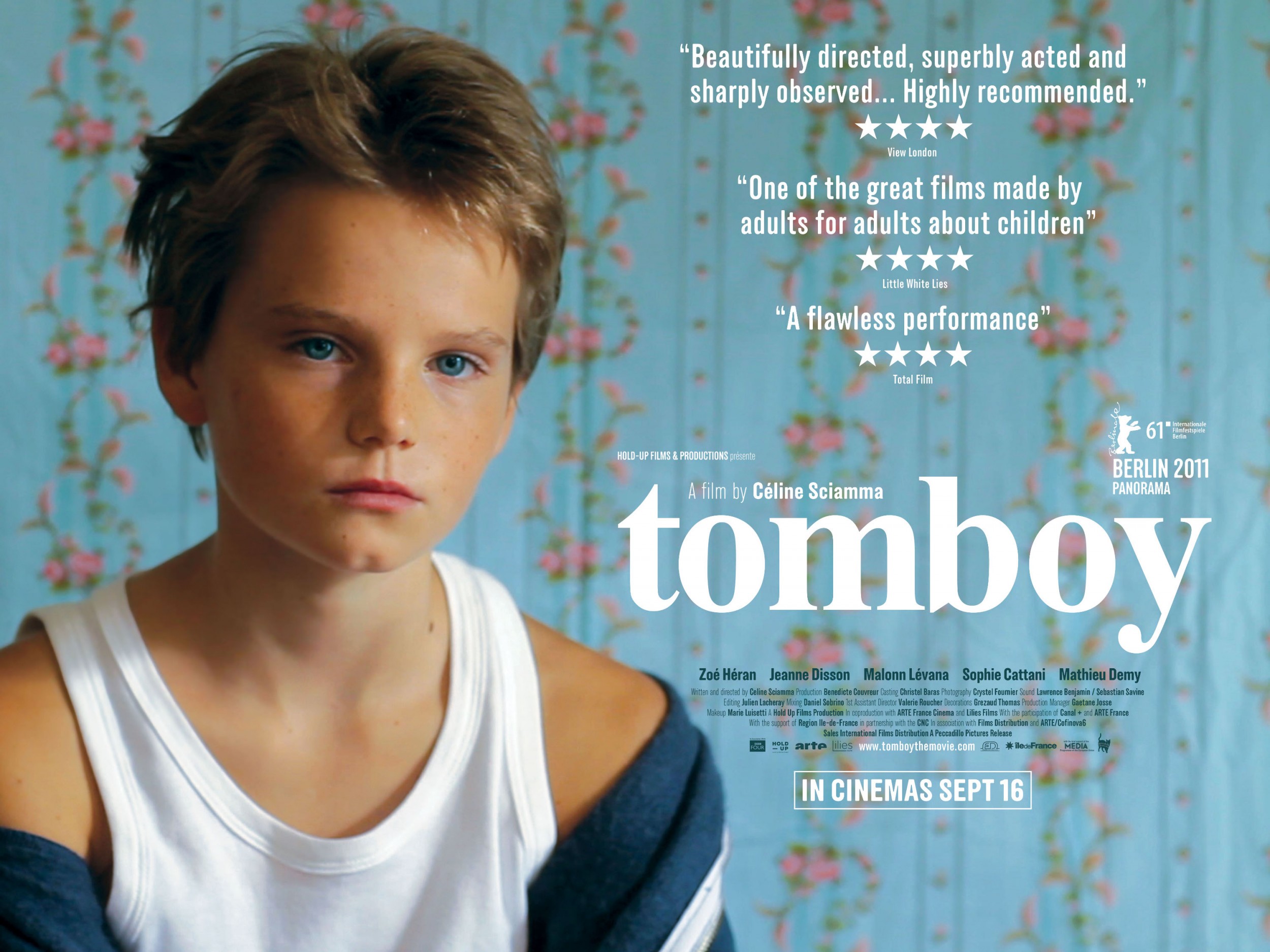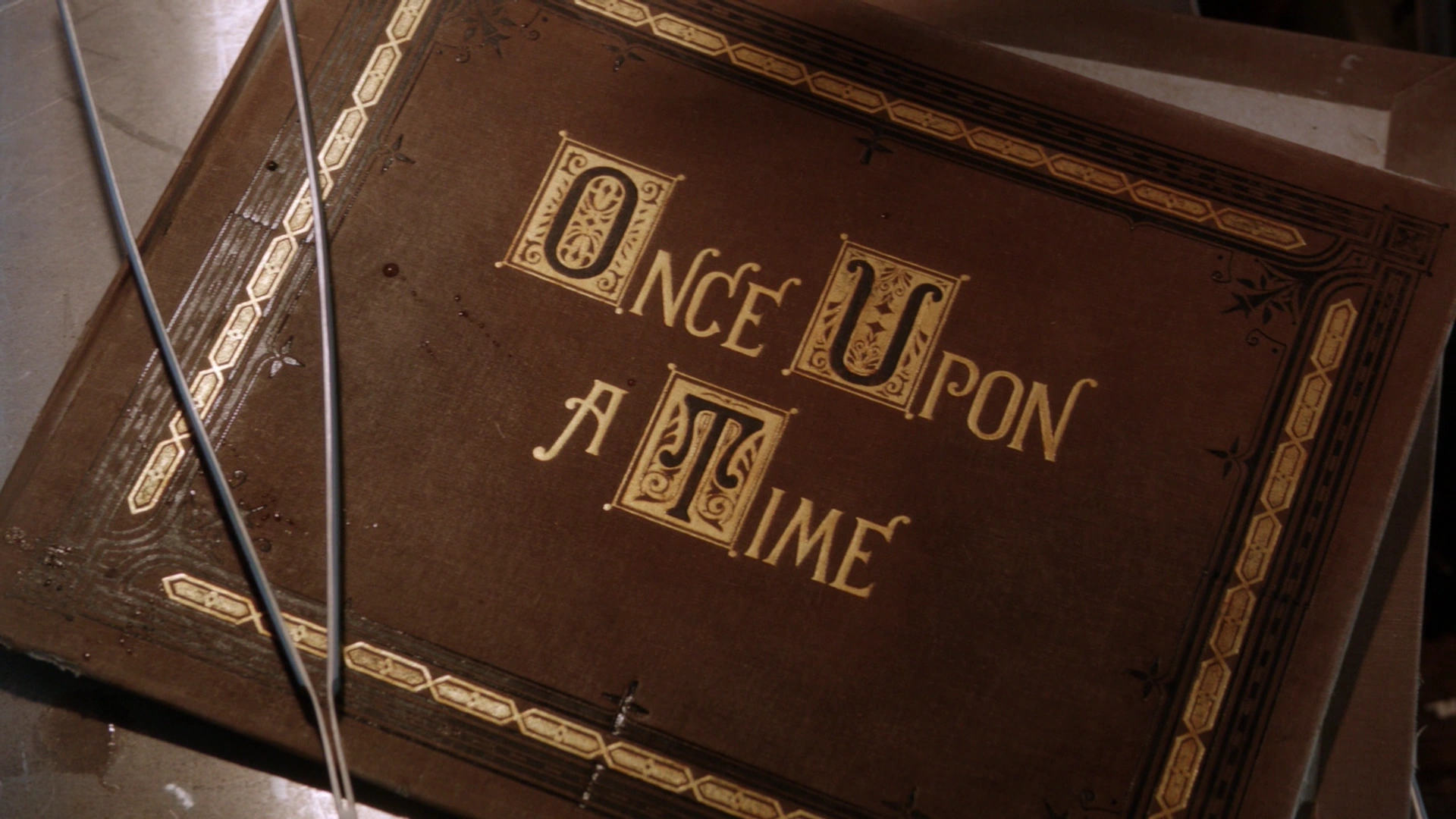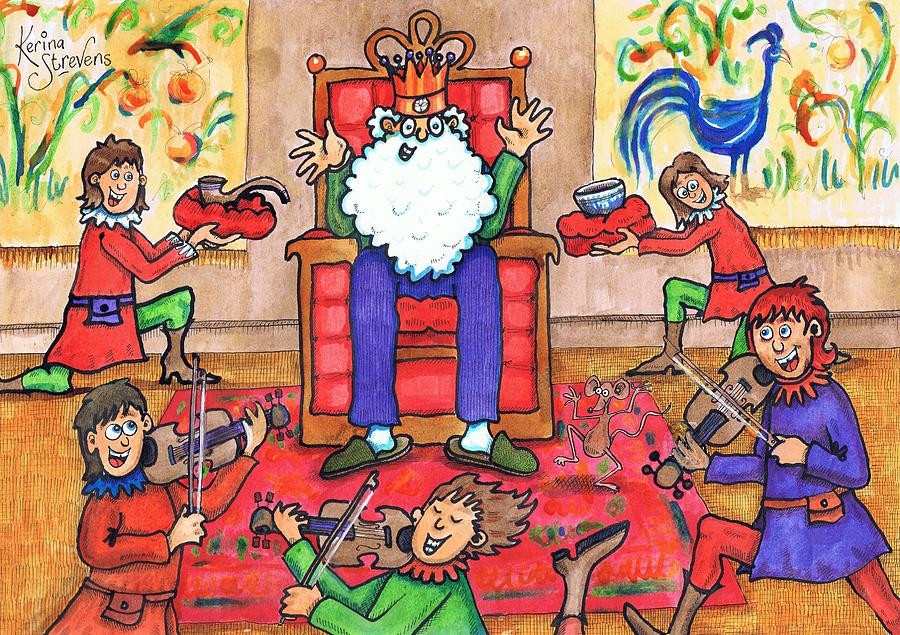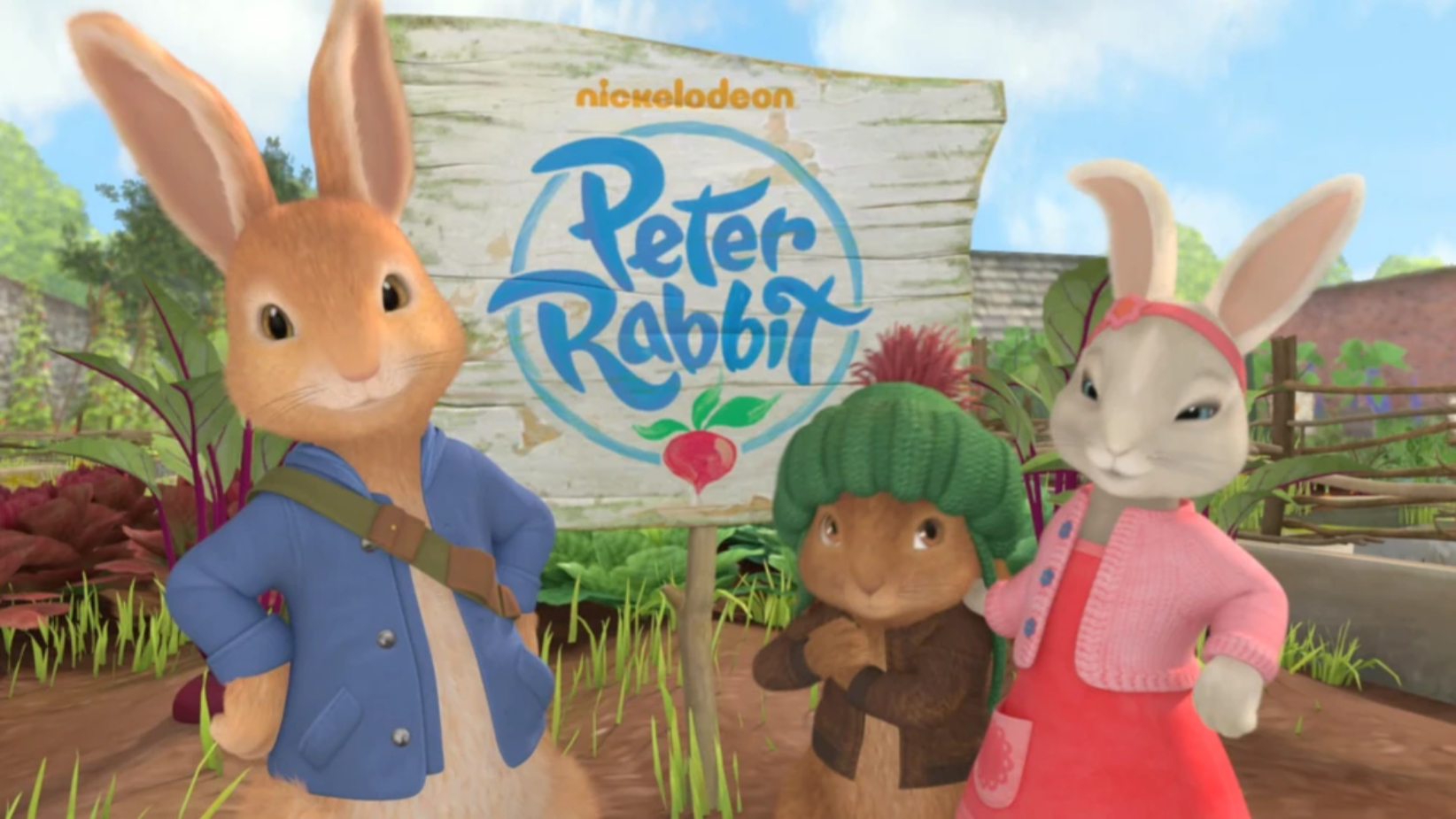
Miss Potter is a 2006 Anglo-American biographical fiction family drama film directed by Chris Noonan. It is a biographical film of children's author and illustrator Beatrix Potter, and combines stories from her own life with animated sequences featuring characters from her stories, such as Peter Rabbit. Scripted by Richard Maltby, Jr., the director of the Tony-winning Broadway revue, Fosse, the film stars Renée Zellweger in the title role; Ewan McGregor as her publisher and fiancé, Norman Warne; and Lloyd Owen as solicitor William Heelis. Emily Watson stars as Warne's sister, Millie. Lucy Boynton also stars as the young Beatrix Potter. It was filmed in St. Peter's Square Hammersmith, Cecil Court, Osterley Park, Covent Garden, the Isle of Man, Scotland and the Lake District. Miss Potter was released on 29 December 2006 so that the film could compete for the 2007 Academy Awards. The film was intended to be released generally on 12 January 2007, but Variety.com reported that the Weinstein Company had decided to push a wider release date until after the Academy Awards on 25 February 2007.[3] The date seemed to fluctuate a number of times, but the Weinstein Company website ultimately listed its release date as 9 March. The film received generally positive reviews[4] and earned Zellweger her sixth Golden Globe nomination.
When you taught me how to dance by Katie Melua.
Katie Melua.

Ketevan "Katie" Melua (/ˈmɛluːə/; Georgian: ქეთევან „ქეთი“ მელუა IPA: [kʰɛtʰɛvɑn mɛluɑ],[2] born 16 September 1984) is a Georgian-British singer, songwriter and musician. She moved to Northern Ireland at the age of eight and then to England at fourteen.[3] Melua is signed to the small Dramatico record label, under the management of composer Mike Batt,[4] and made her musical debut in 2003. In 2006, she was the United Kingdom's best-selling female artist[5] and Europe's highest selling European female artist.[6]
In November 2003, at the age of nineteen, Melua released her first album, Call Off the Search, which reached the top of the United Kingdom album charts and sold 1.8 million copies in its first five months of release.[7] Her second album, Piece by Piece, was released in September 2005 and to date has gone platinum four times.[8] Melua released her third studio album Pictures in October 2007.[9]
Bildungsroman.

In literary criticism, a Bildungsroman (German pronunciation: [ˈbɪldʊŋs.ʁoˌmaːn]; German: "novel of formation, education, culture"),[a] novel of formation, novel of education,[2]or coming-of-age story (though it may also be known as a subset of the coming-of-age story) is a literary genre that focuses on the psychological and moral growth of the protagonist from youth to adulthood (coming of age),[3] in which character change is extremely important.[4][5]
Tomboy.

A tomboy is a girl who exhibits characteristics or behaviors considered typical of a boy,[1][2] including wearing masculine clothing and engaging in games and activities that are physical in nature and are considered in many cultures to be unfeminine or the domain of boys.[2] Tomboy, according to the Oxford English Dictionary (OED), "has been connected with connotations of rudeness and impropriety" throughout its use.[3]
Didactic.

Didacticism is a philosophy that emphasizes instructional and informative qualities in literature and other types of art. The term has its origin in the Ancient Greek word διδακτικός (didaktikos), "related to education and teaching", and signified learning in a fascinating and intriguing manner.[3]
Didactic art was meant both to entertain and to instruct. Didactic plays, for instance, were intended to convey a moral theme or other rich truth to the audience.[4][5] An example of didactic writing is Alexander Pope's An Essay on Criticism (1711), which offers a range of advice about critics and criticism. An example of didactism in music is the chant Ut queant laxis, which was used by Guido of Arezzo to teach solfege syllables.
Around the 19th century the term didactic came to also be used as a criticism for work that appears to be overburdened with instructive, factual, or otherwise educational information, to the detriment of the enjoyment of the reader (a meaning that was quite foreign to Greek thought). Edgar Allan Poe even called didacticism the worst of "heresies" in his essay The Poetic Principle.
Antagonist.

An antagonist is a character, group of characters, institution, or concept that stands in or represents opposition against which the protagonist(s) must contend. In other words, an antagonist is a person or a group of people who opposes a protagonist.[1] In the classic style of stories where the action consists of a hero fighting a villain/enemy, the two may be regarded as protagonist and antagonist, respectively. However, the villain of the story is not always the same as the antagonist, as some narratives cast the villain in the protagonist role, with the opposing hero as the antagonist.
An antagonist also may represent a threat or obstacle to the main character by its existence and not necessarily targeting him or her in a deliberate manner.
Charles Perrault.

Charles Perrault (French: [ʃaʁl pɛʁo]; 12 January 1628 – 16 May 1703) was a French author and member of the Académie Française. He laid the foundations for a new literary genre, the fairy tale, with his works derived from pre-existing folk tales. The best known of his tales include Le Petit Chaperon Rouge (Little Red Riding Hood), Cendrillon (Cinderella), Le Chat Botté (Puss in Boots), La Belle au bois Dormant (The Sleeping Beauty), and Barbe Bleue (Bluebeard).[1] Some of Perrault's versions of old stories may have influenced the German versions published by the Brothers Grimm more than 100 years later. The stories continue to be printed and have been adapted to opera, ballet (such as Tchaikovsky's The Sleeping Beauty), theatre, and film. Perrault was an influential figure in the 17th-century French literary scene, and was the leader of the Modern faction during the Quarrel of the Ancients and the Moderns.
Lullabies.

A lullaby, or cradle song, is a soothing song or piece of music, usually played for or sung to children. The purposes of lullabies vary. In some societies they are used to pass down cultural knowledge or tradition. In addition, lullabies are often used for the developing of communication skills, indication of emotional intent, maintenance of infants' undivided attention, modulation of infants' arousal, and regulation of behavior.[1] Perhaps one of the most important uses of lullabies is as a sleep aid for infants.[2] As a result, the music is often simple and repetitive. Lullabies can be found in many countries, and have existed since ancient times.[3]
Fairy Tale.

A fairy tale is a type of short story that typically features folkloric fantasy characters, such as dwarves, elves, fairies, giants, gnomes, goblins, mermaids, trolls, unicorns, or witches, and usually magic or enchantments. Fairy tales may be distinguished from other folk narratives such as legends (which generally involve belief in the veracity of the events described)[1] and explicitly moral tales, including beast fables. The term is mainly used for stories with origins in European tradition and, at least in recent centuries, mostly relates to children's literature.
In less technical contexts, the term is also used to describe something blessed with unusual happiness, as in "fairy tale ending" (a happy ending)[2] or "fairy tale romance" (though not all fairy tales end happily). Colloquially, a "fairy tale" or "fairy story" can also mean any far-fetched story or tall tale; it is used especially of any story that not only is not true, but could not possibly be true. Legends are perceived as real; fairy tales may merge into legends, where the narrative is perceived both by teller and hearers as being grounded in historical truth. However, unlike legends and epics, they usually do not contain more than superficial references to religion and actual places, people, and events; they take place once upon a time rather than in actual times.[3]
Once Upon A Time.

"Once upon a time" is a stock phrase used to introduce a narrative of past events, typically in fairy tales and folk tales. It has been used in some form since at least 1380 (according to the Oxford English Dictionary) in storytelling in the English language and has opened many oral narratives since 1600. These stories often then end with "and they all lived happily ever after", or, originally, "happily until their deaths".
The phrase is particularly common in fairy tales for younger children, where it is almost always the opening line of a tale. It was commonly used in the original translations of the stories of Charles Perrault as a translation for the French "il était une fois", of Hans Christian Andersen as a translation for the Danish "der var engang", (literally "there was once"), the Brothers Grimm as a translation for the German "es war einmal" (literally "it was once") and Joseph Jacobs in English translations and fairy tales.
The Wheel.

A wheel is a circular component that is intended to rotate on an axle bearing. The wheel is one of the main components of the wheel and axle which is one of the six simple machines. Wheels, in conjunction with axles, allow heavy objects to be moved easily facilitating movement or transportation while supporting a load, or performing labor in machines. Wheels are also used for other purposes, such as a ship's wheel, steering wheel, potter's wheel and flywheel.
Common examples are found in transport applications. A wheel greatly reduces friction by facilitating motion by rolling together with the use of axles. In order for wheels to rotate, a moment needs to be applied to the wheel about its axis, either by way of gravity, or by the application of another external force or torque.
Old King Cole.

"Old King Cole" is a British nursery rhyme first attested in 1708. Though there is much speculation about the identity of King Cole, it is unlikely that he can be identified reliably as any historical figure. It has a Roud Folk Song Index number of 1164. The poem describes a merry king who called for his pipe, bowl, and musicians, with the details varying among versions. It is unlikely that the King Cole of the nursery rhyme can be identified with any particular historical person.[2]
William King mentions two possibilities: the "Prince that Build Colchester" and a 12th-century cloth merchant from Reading named Cole-brook. Sir Walter Scott thought that "Auld King Coul" was the father of the giant Fyn M'Coule (Finn McCool).
Nonsense.

Nonsense is a communication, via speech, writing, or any other symbolic system, that lacks any coherent meaning. Sometimes in ordinary usage, nonsense is synonymous with absurdity or the ridiculous. Many poets, novelists and songwriters have used nonsense in their works, often creating entire works using it for reasons ranging from pure comic amusement or satire, to illustrating a point about language or reasoning. In the philosophy of language and philosophy of science, nonsense is distinguished from sense or meaningfulness, and attempts have been made to come up with a coherent and consistent method of distinguishing sense from nonsense. It is also an important field of study in cryptography regarding separating a signal from noise.
Hey Diddle Diddle.

"Hey Diddle Diddle" (also "Hi Diddle Diddle", "The Cat and the Fiddle", or "The Cow Jumped Over the Moon") is an English nursery rhyme. It has a Roud Folk Song Index number of 19478.[1] The rhyme may date back to at least the sixteenth century. There is a reference in Thomas Preston's play A lamentable tragedy mixed ful of pleasant mirth, conteyning the life of Cambises King of Percia, printed in 1569 that may refer to the rhyme:
They be at hand Sir with stick and fidle;
They can play a new dance called hey-didle-didle.[2]
They can play a new dance called hey-didle-didle.[2]
Peter Rabbit.

Peter Rabbit is a fictional animal character in various children's stories by Beatrix Potter.[1] He first appeared in The Tale of Peter Rabbit in 1902 and subsequently in five more books between 1904 and 1912. Spinoff merchandise includes dishes, wallpaper, and dolls. He appears as a character in a number of adaptations. The rabbits in Potter's stories are anthropomorphic and wear human clothes: Peter wears a jacket and shoes. Peter, his mother, Mrs. Josephine Rabbit, as well as his sisters, Flopsy, Mopsy, and Cotton-tail live in a rabbit hole that has a human kitchen, human furniture, as well as a shop where Mrs. Rabbit sells various items. Peter's relatives are Cousin Benjamin Bunny and Benjamin's father Mr. Benjamin Bunny.
Beatrix Potter.

Helen Beatrix Potter (28 July 1866 – 22 December 1943) was an English writer, illustrator, natural scientist, and conservationist best known for her children's books featuring animals, such as those in The Tale of Peter Rabbit.
Born into a privileged household, Potter was educated by governesses and grew up isolated from other children. She had numerous pets and spent holidays in Scotland and the Lake District, developing a love of landscape, flora and fauna, all of which she closely observed and painted.
Though Potter was typical of women of her generation in having limited opportunities for higher education, her study and watercolors of fungi led to her being widely respected in the field of mycology. In her thirties, Potter published the highly successful children's book, The Tale of Peter Rabbit. Potter began writing and illustrating children's books full-time.
Orlando(Film).

Orlando is a 1992 British film[3] based on Virginia Woolf's novel Orlando: A Biography, starring Tilda Swinton as Orlando, Billy Zane as Marmaduke Bonthrop Shelmerdine, and Quentin Crisp as Queen Elizabeth I. It was directed by Sally Potter.[4]
It was particularly acclaimed for its visual treatment of the settings of Woolf's 1928 novel. Potter chose to film much of the Constantinople portion of the book in the isolated city of Khiva in Uzbekistan, and made use of the forest of carved columns in the city's 18th century Djuma Mosque.
The film premiered at the 49th Venice International Film Festival, in which it entered the main competition.[5] Orlando was re-released for screening in select cinemas in August 2010.[6]
Harry Potter.

Harry Potter is a series of fantasy novels written by British author J. K. Rowling. The novels chronicle the life of a young wizard, Harry Potter, and his friends Hermione Granger and Ron Weasley, all of whom are students at Hogwarts School of Witchcraft and Wizardry . The main story arc concerns Harry's struggle against Lord Voldemort, a dark wizard who intends to become immortal, overthrow the wizard governing body known as the Ministry of Magic, and subjugate all wizards and Muggles.
Since the release of the first novel, Harry Potter and the Philosopher's Stone, on 26 June 1997, the books have found immense popularity, critical acclaim and commercial success worldwide. They have attracted a wide adult audience as well as younger readers, and are often considered cornerstones of modern young adult literature.[3] The series has also had its share of criticism, including concern about the increasingly dark tone as the series progressed, as well as the often gruesome and graphic violence it depicts. As of July 2013, the books have sold more than 450 million copies worldwide, making them the best-selling book series in history, and have been translated into seventy-three languages.[4][5] The last four books consecutively set records as the fastest-selling books in history, with the final instalment selling roughly eleven million copies in the United States within twenty-four hours of its release.
Deep Frying.

Deep frying (also referred to as deep fat frying) is a cooking method in which food is submerged in hot fat, most commonly oil, rather than the shallow oil used in conventional frying, done in a frying pan. Normally, a deep fryer or chip pan is used for this; industrially, a pressure fryer or vacuum fryer may be used. Deep frying may also be performed using oil that is heated in a pot. Deep frying is classified as hot-fat cooking method.[1][2] Typically, deep frying cooks foods quickly: all sides of a food are cooked simultaneously as oil has a high rate of heat conduction.[3]
Governess.

A governess is a woman employed to teach and train children in a private household. In contrast to a nanny (formerly called a nurse), she concentrates on teaching children instead of meeting their physical needs. Her charges are of school age rather than babies.[1]
The position of governess used to be common in well-off European families before World War I, especially in the countryside where no suitable school existed nearby. Parents' preference to educate their children at home—rather than send them away to boarding school for months at a time—varied across time and countries. Governesses were usually in charge of girls and younger boys. When a boy was old enough, he left his governess for a tutor or a school.
Lake District.

The Lake District, also known as the Lakes or Lakeland, is a mountainous region in North-West England. A popular holiday destination, it is famous for its lakes, forests and mountains (or fells) and its associations with the early 19th century writings of William Wordsworth and the other Lake Poets.
Historically split between Cumberland, Westmorland and Lancashire, the Lake District is now entirely in Cumbria. All the land in England higher than 3,000 feet (910 m) above sea level lies within the National Park, including Scafell Pike, the highest mountain in England. It also contains the deepest and longest bodies of water in England respectively Wastwater and Windermere.
Mr. McGregor.

Mr. McGregor is a fictional character in three children's books by author and illustrator Beatrix Potter. He is an elderly, serio-comic villain of Scots background intent upon keeping hungry rabbits out of his vegetable garden and sometimes catching them to put them in a pie and eat them. Potter denied the character was based on a real person but her mentor in mycology, Charlie McIntosh, may have been the inspiration for McGregor's physical appearance and her landlord in 1893, Atholl McGregor, may have been the source for the character's name. Mr. McGregor appeared in two episodes of an animated BBC television series based on Potter's books in 1993.
Parsley.

Parsley or garden parsley (Petroselinum crispum) is a species of Petroselinum in the family Apiaceae, native to the central Mediterranean region (southern Italy, Greece, Algeria, and Tunisia), naturalized elsewhere in Europe, and widely cultivated as a herb, a spice, and a vegetable.
Where it grows as a biennial, in the first year, it forms a rosette of tripinnate leaves 10–25 cm (3.9–9.8 in) long with numerous 1–3 cm (0.4–1.2 in) leaflets, and a taproot used as a food store over the winter.
Parsley is widely used in European, Middle Eastern, and American cooking. Curly leaf parsley is often used as a garnish. In central Europe, eastern Europe and southern Europe, as well as and in western Asia, many dishes are served with fresh green chopped parsley sprinkled on top. Root parsley is very common in central, eastern and southern European cuisines, where it is used as a snack or a vegetable in many soups, stews, and casseroles.
沒有留言:
張貼留言